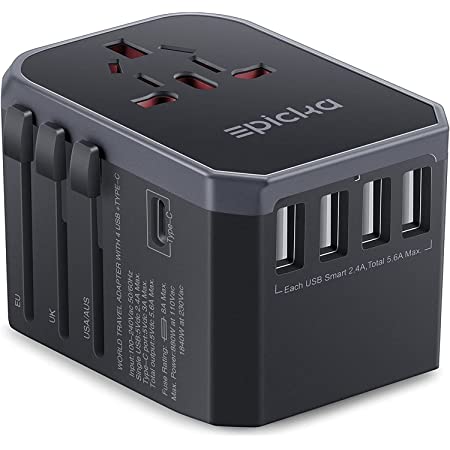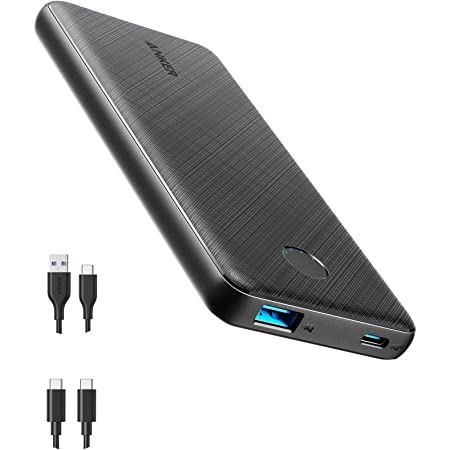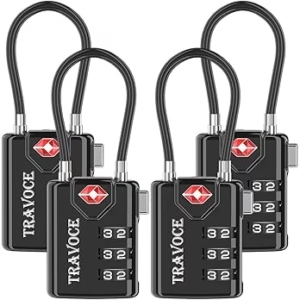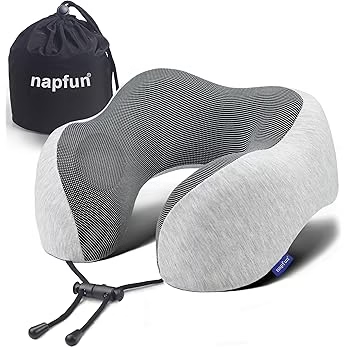Plug For Lithuania: What You Need To Know
What is the plug for Lithuania? Before you travel, check the information below to make sure your electronic devices are compatible with the outlet type and voltage.
Electrical Summary
Plug Compatibility: Type C, Type F
Voltage: 220V – 240V
Frequency: 50 Hz
Type C

Type F

Can North Americans use Electronics in Lithuania without an Adapter?
No! North Americans will need an adapter for the outlets and a transformer for the voltage when traveling to Lithuania. North Americans device plugs will not work with the outlet types in Lithuania. Also, the voltage in Lithuania is different from North American voltages.
Can Europeans use Electronics in Lithuania without an adapter?
Yes! Europeans do not need a travel adapter or transformer when traveling to Lithuania. Most device plugs will work with the outlet types in Lithuania. Also, the voltage in Lithuania is the same as in Europe.
What Outlet does Lithuania Use?
Type C

Type C plug sockets are used in Europe, Africa and Asia. They have two round pins and no grounding pin. These plugs are typically used with devices that have a voltage of 220-240V. This outlet is rated for 2.5 amps. Plug Type E, and Type F are compatible with this socket. All other plug types will need an adapter.
Type F

Type F electrical plug sockets are used in Germany, Spain, Italy and some parts of Africa. They have two round pins and a grounding pin. These outlets are typically used with devices that have a voltage of 220-240V. This outlet is rated for 16 amps. Plug Type C and Type E are compatible with this socket. All other plug types will need an adapter.
Recommended Products:
Should I use a VPN when traveling?
YES! Using a VPN when traveling is highly recommended to protect your online privacy and security. Public Wi-Fi networks in hotels, airports, and cafés are often unsecured, making you vulnerable to hackers and data theft. A VPN encrypts your internet connection, safeguarding sensitive information like passwords and banking details. It also allows you to bypass geo-restrictions, granting access to streaming services and websites that may be blocked in certain countries. Additionally, a VPN helps prevent government surveillance and ISP tracking. For a seamless and secure browsing experience while traveling, choose a reliable VPN with fast speeds and strong encryption.
Lithuania Travel Essentials:
Is it safe to drink water in Lithuania?
Tap water in Lithuania is generally considered safe to drink. According to the World Health Organization (WHO), Lithuania has a well-developed drinking water supply system, with most of the water coming from underground sources, such as wells and springs, and treated to meet high standards of quality.
The water treatment processes in Lithuania include filtration, disinfection, and distribution through a network of pipes. The drinking water in Lithuania is regularly monitored to ensure that it meets the required standards of quality and safety.
However, in some areas, the water quality may be affected by factors such as agricultural run-off or industrial pollution. In such cases, local authorities may advise residents to boil their tap water before drinking it or to drink bottled water instead.
We recommend always packing a filtered water bottle when traveling!
Travel Essentials
Be sure to check our list of travel essentials before your trip!
Should I get travel insurance when traveling to Lithuania?
It is generally recommended to get travel insurance when traveling to a different country. Travel insurance can provide financial protection and peace of mind in case of unexpected events, such as medical emergencies, trip cancellations, lost or stolen baggage, or other travel-related mishaps.
Travel insurance can cover various expenses related to your trip, such as medical expenses, emergency medical transportation, trip cancellation or interruption, lost or stolen baggage or personal belongings, and other travel-related expenses.
Before purchasing travel insurance, it’s important to carefully review the policy details, including the coverage limits, exclusions, and any applicable deductibles or copays. You should also make sure that the policy covers any activities or destinations that you plan to participate in or visit during your trip. Click here to price for Travel Insurance for Lithuania
Travel Summary
Lithuania is also home to many historic sites, including the beautiful Trakai Island Castle, the Hill of Crosses, and the Curonian Spit National Park. Visitors can explore stunning churches, museums, and art galleries, as well as the beautiful natural landscapes of the country’s many parks and forests.
Lithuania is also known for its delicious cuisine, with a range of traditional dishes such as cepelinai, kugelis, and kibinai, as well as a thriving modern food scene. The country’s beer culture is also an important part of daily life and visitors can enjoy a pint of local brew in many bars and restaurants.
Lithuania is a welcoming destination for travelers, with a strong sense of hospitality and a rich cultural heritage. The official language is Lithuanian, but English is also widely spoken. The country has a well-developed tourism infrastructure, with a range of accommodations and activities to suit all budgets and interests.
Overall, Lithuania is a must-visit destination for anyone interested in history, culture, and natural beauty. With its stunning monuments, delicious food, and welcoming locals, Lithuania offers a unique and unforgettable travel experience.
Traveling to another country? Check out our Countries page for more info on countries like Latvia, Estonia, Belarus, Russia, Sweden, Slovakia, Moldova, Ukraine





